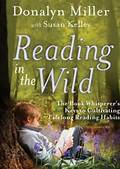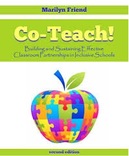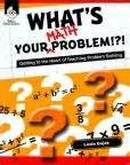 I have a confession to make:
We are always behind in our classroom.
And I'm good with that.
Walk through the halls at my school at any given time during the day, and you are sure to run into someone who is in a hurry. When the bell rings between classes, students and teachers stream out of their rooms and speed down corridors like express trains barreling down tracks. Although the students are expected to walk quietly in straight lines, they are more likely moving about in "buzzing" clusters, stealing those valuable socializing minutes while they can because once all they are quietly tucked away in their next class, it is back down to the serious business of "covering" curriculum. And lots of it.
In our classroom, we have the luxury of being self contained.
This model works extremely well in a co-teaching classroom.
Most of the time, we get to ignore the bell. That's not to say we don't have to manage our time wisely, but we have a
lot more flexibility. Thank goodness.
It seems there is a real contradiction between the amount of curriculum we are expected to "cover" in a school year and the level at which students are expected to master the curriculum covered. Simply disseminating information,
assigning homework, providing a study guide, and administering an assessment doesn't ensure deep, meaningful learning. Students need to be active participants in their learning. They need to be involved in establishing "real world" purpose. They need to activate their prior
knowledge and share their wonders. They need to explore, discover, connect, discuss, create, and revise. They need opportunities to learn in ways that address their learning needs, styles, and preferences. All of this takes time.
Active student engagement + time = deep, meaningful and lasting learning
So in our classroom, we go slow to go fast and some how it all works out in the end.
We value quality over quantity.
We believe less is more.
And therefore, we are always a bit behind.
(But please don't tell anyone I said that.)
Jamie, my co-teaching partner, is not in the room first period of the day. This is our science/social studies block. Although a third of our class has diagnosed learning disabilities, the powers that be have determined a special educator is not needed during this time; a para-educator will do just fine. Lucky for me, Charlotte our para is fabulous. She is intuitive and responsive to student needs. Designing and differentiating the science and social studies curriculum, however, is all on me. But here's the thing, more often than not, what's best for our student's with special needs is just best practice and benefits all students.
Butterfly Rsearch
When beginning our unit on Life Cycles and the Monarch Butterfly, all of the students in our fourth grade classroom needed explicit instruction in note taking. I used a document camera to project a high interest informational text with beautiful photographs on to our whiteboard. Right beside it, I used the Bright Links projector to display lined paper just like the paper in the students' science notebooks.
All students can benefit from visual supports.
I modeled the process of close reading: reading and rereading while stopping to think aloud about the text and determine importance. I modeled paraphrasing key information and note taking with bullets.
All students can benefit from clear models.
I slowly turned the responsibility of close reading and note taking over to the students. First I asked for student volunteers to point out key information from the text, next students determined key information in their table groups, finally students determined key information independently and then shared in their table groups.
All students can benefit from a gradual release of responsibility.
Differentiation
When it came time for the students to strike out on their own, I differentiated by providing a multitude of resources (books, articles, websites, online videos, slide shows, and even a radio podcast). The note taking rule was: if you don't understand it , don't add it to your notes.
All students can benefit from having a variety of resources at
their level to choose from.
Most students wanted to work in partnerships, and they wanted to choose their own partners. I was apprehensive about allowing them to do this at first. I usually match up partners carefully with a great deal of forethought. We decided to give it a try under the condition they chose a "Just Right" learning partner who might not necessarily be a best bud. They did a great job choosing partners. I was so impressed!
All students can benefit from collaborating with a "Just Right" partner.
Over the next several days, the students were completely engaged in their research and note taking. Charlotte and I were able to circulate the room providing support where needed. In the end, all students were successful. They were proud of their notes and amazed by all they had learned.
All students benefit from best practice.
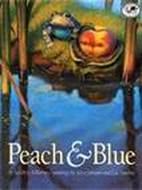 Peach dangles on a tree limb above the pond. She is ripe, juicy, and ready for picking; her days are coming to an end. Below, a blue-bellied toad is startled by the tear drops that fall like rain from the tree above. How will these two unlikeliest of friends help one another see the world in a whole new way?
This beautiful picture book written by Sarah Kilborne and illustrated by Steve Johnson leads to a thoughtful and insightful discussion about strengths and challenges. Blue uses his ability to problem solve to help Peach down from the tree, build her a floating nest of leaves, and help her see a world she has never seen before. Peach, in turn, uses her gift with words and her ability to appreciate true beauty to help Blue "see" his world in a new light.
Each character uses their strengths to help the other with their challenges. Through discussion (and an invigorating movement activity), we realize that we all have strengths and challenges. Our job as a community of learners is to use our strengths to help others with their challenges and allow others to do the same for us.
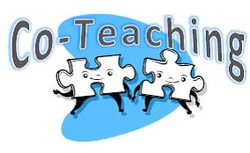 The Co-Teaching Break Down
Strengths and challenges come in many different forms not just the traditional "school smarts". While some of us struggle with reading, writing, or math, others
find it difficult to make friends, sit still, listen, or see someone else's point of view. The list of strengths and challenges goes on and on. It is important that all members of the co-teaching community appreciate their our own strengths and recognize their own challenges, so they can begin to connect and empathize with others.
Instructional Delivery
Both teachers participated in the movement activity as active members of the learning community. As we took turns calling out
areas of strength, those who fit the category moved to a new place in the circle. Jamie and I made sure to start with categories that were a
challenge to us, so the students could see it was okay to stay put. Once the students saw that it was safe to "share" their challenges, they really seemed to enjoy this activity. Broad categories included sports, art, music, design, building, technology, nature, social skills, work habits, and academics. After the movement activity, we
reflected. The students noticed that everyone had times when they
moved and everyone had times when they stayed put. We all vowed
(raise your right hand and repeat after me style) to use our strengths to help one another with our challenges and accept help from one another when needed. Many students went on to include a list of their strengths and challenges on their "All About Me" posters.
 First Day Jitters
The buses pull up to the curb. Doors slide open, and children with fresh haircuts and brand new sneakers climb off. Weighed down by backpacks stuffed full of school supplies, they find their places in line. Beneath the friendly smiles, shy grins, and steely gazes, I can sense my new students' excitement and anxiety. Feelings I recognize because I am feeling the same way. A new school year and an overwhelming sea of new faces-what lies
in store for the year ahead?
As teachers, we know our new students come to us with apprehension. Will I know anyone in my class? Will I make new friends? Will my teacher be nice? Will I feel comfortable? Our students need to feel a sense of belonging. They need to feel comfortable and safe in order to take the risks necessary for learning. They need to feel valued for their strengths and their uniqueness and feel supported when it comes to their challenges. Taking the time to develop a sense of community within the classroom is the most important thing a teacher can do to start off the school year. The time invested now pays off every single day throughout the year.
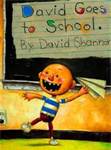 Social Smarts*
There are many different kinds of "smarts". We need social smarts in order to make friends, connect with others, and feel like we belong. Our words and actions affect those around us. Showing interest in others and thinking about how others feel doesn't always come easy. When we act in "unexpected" ways, the people around us have "uncomfortable" thoughts. In David Goes to School by David Shannon, David spends the day wreaking havoc in his classroom. His exasperated teacher utters the phrase, "No, David!” over and over again. David is seemingly unaware of the effects of his behavior on his unfortunate classmates.
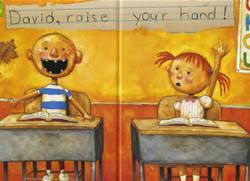 With a picture of David and a classmate projected on to our interactive whiteboard, we add thought bubbles and brainstorm his classmate's uncomfortable thoughts. We decide David needs clearly defined expectations and reminders to use his social smarts, so that he can be successful socially and his classmates can feel safe and comfortable around him.
Class Norms
After reading David Goes to School, we agree that
every classroom needs a set of clear expectations. Norms set in place to assure that all members of that community feel
safe, comfortable, and successful. Norms that establish clear
and reasonable expectations.
We ponder this important question:
“How can we make our classroom a place that feels safe and comfortable so that everyone can learn, grow, and have fun?”
We brainstorm rules that are important to us and find that all of our ideas fall under four norms:
~Be Kind
~Be Respectful
~Be Responsible
~Be Safe
~Work Hard
It was important that the class worked together as a community to establish these norms, so that everyone felt valued and invested. We all agreed to follow these expectations to the best of our ability and give reminders when needed.
By agreeing upon a set of norms, we have taken the first step in building our learning community. We are off to a great start!
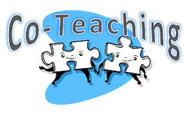 The Co-Teaching Break Down
Why Social Smarts*?
This year several of our students have
IEPs that call for clearly defined expectations and explicit instruction in social pragmatics. These students work on social language skills in a one-to-one or small group setting with a speech and language teacher. So often these students learn to apply skills in this structured setting but continue to struggle in authentic social situations. Carrying the concepts and vocabulary of social language over into the classroom benefits all students.
Instructional Delivery**
It is important for our students to see both Jamie and I
delivering direct instruction as well as acting in a supporting role. With a year of co-teaching under our belts, Jamie and I were able to "dance" our way through this lesson, taking turns leading and supporting. I read aloud and lead the discussion about unexpected behaviors and uncomfortable thoughts while Jamie acted as a model, asked clarifying questions (she is masterful at this), and provided cues and prompts when needed. Jamie led the brainstorming session and charted ideas while I took the supportive role.
*To learn more about social thinking visit Michelle Garcia Winner's
website at socialthinking.com
**To learn more about the roles of co-teachers check out Co-Teach: A Handbook for Creating and Sustaining Effective Classroom Partnerships in Inclusive Schools by Marilyn Friend
|








 RSS Feed
RSS Feed